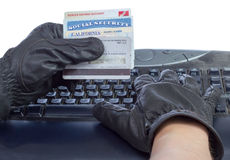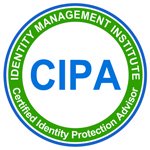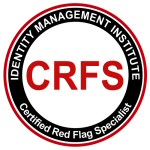Stolen Social Security

A stolen Social Security Number (SSN) can be used for identity theft and fraud purposes which we will further discuss later in this article. The SSN is a key identifier in the United States and its main purpose has evolved since its conception. One of the main problems when dealing with identity theft is that as a society, we do not respect the privacy of our selected identifiers. What I mean is that on one hand we select the SSN to be used as a main identifier of individuals for approving various transactions, and on the other hand, we treat the same identifier carelessly by disclosing the information to others who can use the stolen Social Security number to commit identity fraud. In fact, our Social Security numbers are still printed and disclosed on some of our personal documents and, being traded on the internet for profit exposing us to identity theft risks. These actions are prohibited and illegal by Federal laws but, the laws and their enforcement have not been strong enough to fully prevent SSN theft and misuse.
SOCIAL SECURITY NUMBER PURPOSE
The original purpose of the Social Security number was to track individuals and their accounts within the Social Security program. The original purpose of the SSN evolved over the years to identify employees, patients, students, or index credit records. The Social Security number is also used for identifying individuals in the military, filing taxes with the IRS, receiving assistance from government agencies, applying for a driver’s license, buying issuance, registering a motor vehicle, setting up bank accounts and getting credit cards or loans.
WHY USE SSN AS AN IDENTIFIER
We primarily use SSN as a way to identify individuals because it’s a unique number assigned to all individuals although there have been rare cases of duplicate Social Security numbers. Most other identifiers cannot replace the Social Security number because there could be many of the same identifier such as names or dates of birth. However, to strengthen the competency of an identifier such as the SSN, it could be combined with other identifiers to properly identify a person and approve the transaction.
SSN RISKS AS AN IDENTIFIER
As I mentioned, while our society heavily relies on Social Security numbers as personal identifiers, they are also printed on many personal documents that we carry with us. Fortunately new laws and best practices prohibit the display and printing of the SSN by others to avoid or reduce cases of stolen Social Security number (s). However, individuals must also understand the implications of a stolen Social Security number and protect not only their SSN but also other personal identifiers from falling into the wrong hands.
TYPES OF SOCIAL SECURITY CARDS
There are three different types of Social Security cards. The most common type is the unrestricted type and includes the person’s name and SSN. The unrestricted cards are issued to U.S. citizens and U.S. permanent residents. There are also two types of restricted Social Security cards which state on the cards "NOT VALID FOR EMPLOYMENT" and "VALID FOR WORK ONLY WITH DHS AUTHORIZATION." These restricted types are issued to those who might be approved to work temporarily in the United States or who need a number because of a federal law requiring a Social Security number for certain services.
STOLEN SOCIAL SECURITY NUMBER – HOW IT HAPPENS
Stolen Social Security umber can get in the wrong hands by many ways, including:
• Lost or stolen wallets, purses and mail containing a Social Security number;
• Unsecured communication and posting of the SSN on the Internet, emails and public places;
• Stolen information from the workplace or home;
• Dumpster diving for valuable trash which might contain personal information;
• Collusion between identity thieves and insiders with access to your information; and
• Commercial Social Security number trading on the market.
STOLEN SOCIAL SECURITY NUMBER – WHY IT HAPPENS
As you now know, the SSN is widely used to identify individuals and obtain approval for transactions. A stolen Social Security number, combined with other personal information, can be used by anyone to illegally obtain employment, credit card, personal or business loan, medical and welfare assistance, student loans, driver’s license, income tax refunds, or any thing else than can be obtained with the use of a stolen Social Security number.
DETECTING SIGNS OF STOLEN SOCIAL SECURITY NUMBER
Each year, employers send a copy of the W-2 (Wage and Tax Statement) to Social Security. The Social Security Administration reconciles the employee name and Social Security number on the W-2 with the information in their files. If you are a worker age 25 and older and not receiving benefits, you receive a Social Security Statement every year that summarizes your earnings. Review this Statement to make sure that all your earnings are included. If your Statement does not include all your earnings, let your employer and your Social Security office know about any incorrect information. Also, as part of your broader identity protection efforts, monitor your credit reports for signs of unauthorized new accounts opened under your name or any change of address.
STOLEN SOCIAL SECURITY NUMBER – WHAT TO DO?
If you suspect that you are a victim of stolen Social Security number, place a 90 day initial fraud alert on your credit report by contacting one of the credit reporting agencies, contact the appropriate parties such as the IRS or the bank, complete an identity theft affidavit to document your case, report your case to the police and FTC by completing an ID Theft Complaint Form. In some but rare cases when you are unable to stop the misuse of your stolen Social Security number after doing every thing possible in your power, you may consider applying for a new Social Security number as a last resort. Obtaining a new Social Security card has its advantages and disadvantages, but most importantly you cannot get a new Social Security number:
• To avoid the consequences of filing for bankruptcy;
• If you intend to avoid the law or your legal responsibility; or
• If your Social Security card is lost or stolen, but there is no evidence that someone is using your number.
If you decide to apply for a new num¬ber, you will need to prove your age, U.S. citizenship or lawful immigration status and identity. You also will need to provide evidence that your stolen social security number is still being misused. Keep in mind that a new number probably will not solve all your problems. This is because other governmental agencies (such as the Internal Revenue Service and state motor vehicle agencies) and private businesses (such as banks and credit reporting companies) have records under your old number. Also, because credit reporting companies use the number, along with other personal information, to identify your credit record, using a new number will not guarantee you a fresh start. This is especially true if your other personal information, such as your name and address, remains the same.
If you receive a new Social Security number, you will not be able use the old number anymore.
For some victims of identity theft, a new number actually creates new problems. If the old credit information is not associated with the new number, the absence of any credit history under the new number may make it more difficult for you to get credit.
REPLACING STOLEN SOCIAL SECURITY NUMBER
You can replace your card or your child’s card for free if it is lost or stolen. However, you are limited to three replacement cards in a year and 10 during your lifetime. Legal name changes and other exceptions do not count toward these limits. For example, changes in non-citizen status that require card updates may not count toward these limits. Also, you may not be affected by these limits if you can prove you need the card to prevent a significant hardship.
To get a replacement card, you will need to:
• Complete the Form SS-5;
• Present a recently issued document to prove your identity;
• Show evidence of your U.S. citizenship if you were born outside the United States and did not show proof of citizenship when you got your Social Security card; and
• Show evidence of your current lawful non-citizen status if you are not a U.S. citizen.
Your replacement card will have the same name and number as your previous card.
You can download a copy of the SS-5 Form online at www.ssa.gov
AVOID A CASE OF STOLEN SOCIAL SECURITY NUMBER
There are a few things in your control that you can do to prevent your Social Security number theft and misuse. As far as what others do to protect your information, there is not much you can do except for understanding who they share your information with and how they protect your personal information. For example, the Social Security Administration (SSA) requires and carefully inspects proof of identity from people who apply to replace lost or stolen Social Security cards, or to correct card information. The SSA also maintains the privacy of Social Security records unless:
* The law requires them to disclose information to another government agency; or
* Your information is needed to conduct Social Security or other government health or welfare program business.
For your part, you should treat your Social Security number as confidential information and avoid giving it out unnecessarily. You should keep your Social Security card in a safe place with your other important papers. Do not write the number down or print and carry the card with you unless you need to show the original card to an employer or service provider, otherwise, just carry a copy. Also, avoid speaking loud in a public places when communicating confidential information. Always attempt to understand the risks when someone asks for your Social Security number by asking any of the following questions:
• Why your number is needed;
• How your number will be used;
• Whom will it be shared with and why;
• Where will it be stored and how will it be protected;
• What happens if you refuse; and
• What law requires you to give your number.
The answers to these questions can help you decide whether you want to share your Social Security number with others.
Visit the identity theft resources page for contacts to address a stolen social security number.








